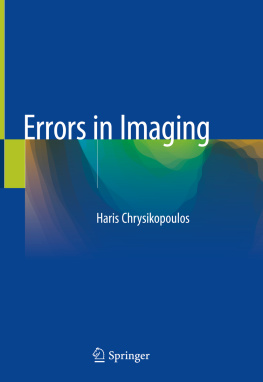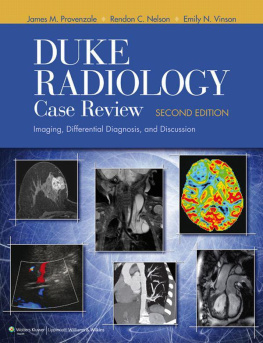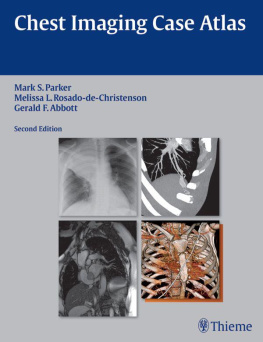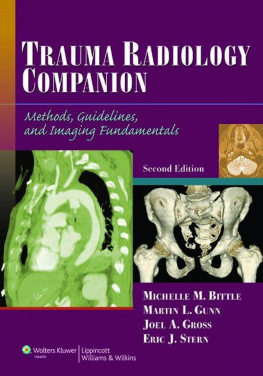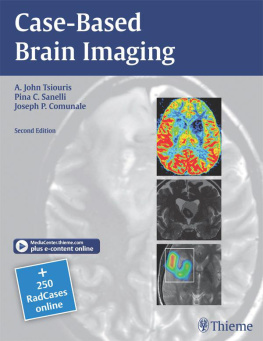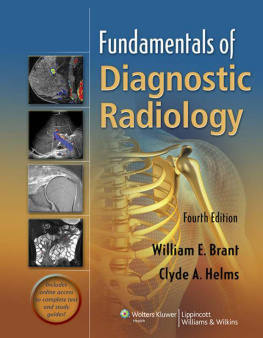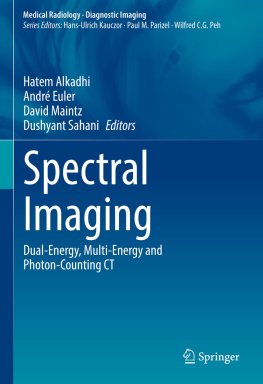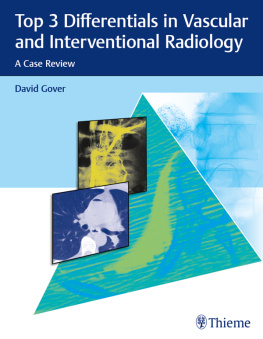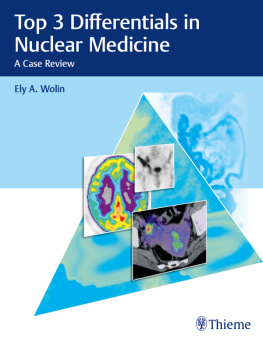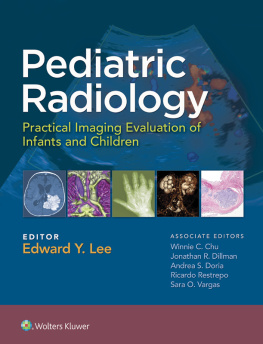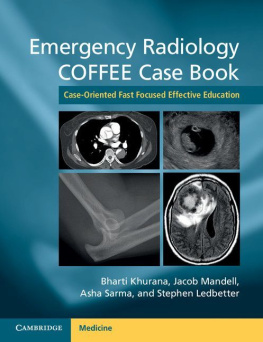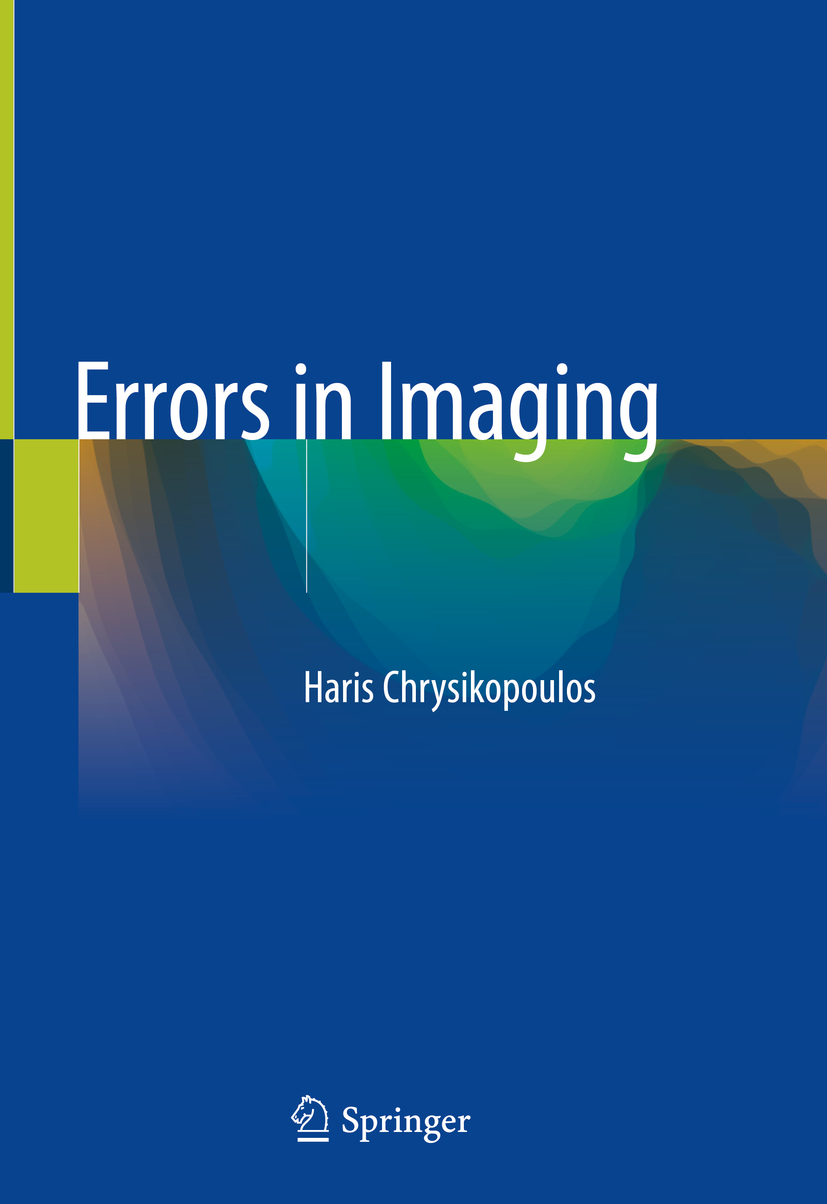Haris Chrysikopoulos
Errors in Imaging
Haris Chrysikopoulos
CT & MR Division, Eurodiagnosis Imaging Center, Corfu, Greece
ISBN 978-3-030-21102-8 e-ISBN 978-3-030-21103-5
https://doi.org/10.1007/978-3-030-21103-5
Springer Nature Switzerland AG 2020
This work is subject to copyright. All rights are reserved by the Publisher, whether the whole or part of the material is concerned, specifically the rights of translation, reprinting, reuse of illustrations, recitation, broadcasting, reproduction on microfilms or in any other physical way, and transmission or information storage and retrieval, electronic adaptation, computer software, or by similar or dissimilar methodology now known or hereafter developed.
The use of general descriptive names, registered names, trademarks, service marks, etc. in this publication does not imply, even in the absence of a specific statement, that such names are exempt from the relevant protective laws and regulations and therefore free for general use.
The publisher, the authors, and the editors are safe to assume that the advice and information in this book are believed to be true and accurate at the date of publication. Neither the publisher nor the authors or the editors give a warranty, expressed or implied, with respect to the material contained herein or for any errors or omissions that may have been made. The publisher remains neutral with regard to jurisdictional claims in published maps and institutional affiliations.
This Springer imprint is published by the registered company Springer Nature Switzerland AG
The registered company address is: Gewerbestrasse 11, 6330 Cham, Switzerland
Dedicated to the younger generation of radiologists
Foreword 1
My career in Radiology so far has spanned 41 years, and I have collaborated and interacted with a large number of physicians. I have spent the past 33 years as the Head of the Imaging Department in a busy private hospital; one of my duties has been, and still is, the supervision and the assessment of performance of junior and senior colleagues. Throughout my career, I have been fascinated and intrigued by the complexities of diagnosing and reporting imaging studies.
Thus, I read with great interest the recent bookErrors in Imaging, written by Dr. Haris Chrysikopoulos, whom I have personally known since 1992. The author deconvolutes successfully a very complex topic. Furthermore, he shows us that it is possible to disarm errors and biases in medical imaging. He weaves his personal experience and his acumen with a large body of literature from radiology, cognitive psychology, and expertise theory.
When I finished reading the book, I felt proud and happy, since the author started his career in my Department. We worked closely together for several years, and I definitely influenced his thinking to a large extent, as he has confided to me several times. After reading the book, I also realized that, independent of each other, we had drawn similar conclusions about errors in imaging and reporting. I have not written about this topic because I could not devote the time and energy required for such a difficult task. Thus, I am a little jealous of Dr. Chrysikopoulos because he has contributed work of great value.
I wish I had had the good fortune of reading such a book during my first steps as a radiologist. Without a doubt, I would have advanced my diagnostic, communication, and teaching skills at a greater pace to a higher level. I am certain that I would have avoided several misdiagnoses and frustrating incidents of miscommunication with other physicians.
In conclusion, I wholeheartedly recommend this book to all imaging professionals, trainees, and teachers and to all physicians that utilize imaging in the management of their patients.
John Andreou
Foreword 2
Errors in imaging, nowadays, is a more complex topic than in previous decades. There are many reasons for this. First, radiologists have gained a leading role in the chain of physicians who build the patient management. Thus, an error may be very important for a remote patients outcome. Second, evolving technology in all imaging methods introduces new artifacts which need time for us to become familiar with. Primers, in particular, may interpret artifacts as disease. Third, with the wide application of teleradiology, the report tends to provide all inclusive information without isolating the single and most important out of many findings because of lack of communication between the radiologists, the patients, and treating physicians. Fourth, in the era of evidence-based and personalized medicine, the report and the selection of the appropriate and cost-effective imaging method are important in the clinical management.
The book Errors in Imaging by Dr. H. Chrysikopoulos is a unique and important addition to the imaging literature. I read the book from cover to cover almost like a novel. I found many issues discussed in the book very didactic. It is amazing to rediscover the ways in which missing lesions occur. Misdiagnosis starts with a failed search not depicting the lesion and ends with a failed decision based on an erroneous evaluation of a lesion as a normal or clinically not significant finding. I am more than certain that most of us never forget the mistakes which we could have avoided. Chapter. It is very interesting that I share with the author the same techniques; first, we evaluate the images with the history and clinical question waived, and then focus on them trying to confirm or to exclude the clinical suspicion. Furthermore, we first assess the normal structures and leave the abnormal ones for the end.
No matter how experienced one can be, the error is a hell around the corner. Bad sleep during the previous night, a knock on the door from a colleague asking for a quick first opinion, phone rings, or any kind of interruption could disrupt concentration and may result in an inaccurate or erroneous report. Unfolding the reasons leading to a missed diagnosis, without any doubt, will act for the benefit of both patients and physicians contributing to continuous education and excellence in medical practice. Personal thoughts of the author and proposals for reshaping radiologic education in the end of the book are more than welcome. The selected cases are educational, the captions focusing on the teaching points are extremely helpful, and the references include almost anything published on the topic.
Dr. Chrysikopouloss book is an important accomplishment, and this is related to his deep interest in the topic and commitment in Radiology. I congratulate him on this comprehensively written book, as he points out, if we become aware of our mistake, we should turn this incident into an opportunity for learning. Who will benefit from the book? All radiologists: residents, fellows, consultants, and seniors will learn and further minimize the risk for misdiagnosis. I see this book as an essential acquisition for the libraries of all academic departments with teaching duties.
Apostolos Karantanas
Acknowledgements
I am indebted to all my teachers and colleagues who sparked and supported my interests in Radiology. I would like to start with the elective course in radiology I attended as a medical student. My teachers were D.A. Aronberg, MD, S.S. Sagel, MD, and B.A. Siegel, MD at the Mallinckrodt Institute of Radiology. Their knowledge, expertise, and teaching inspired me to choose radiology as my career. During my residency at the University of California at San Diego I felt I was standing on the shoulders of giants. The attendings that made a lasting impression on me were J.R. Amberg, MD, J.V. Forrest, MD, G. Leopold, MD, D.L. Resnick, MD, and L.B. Talner, MD. My mentor at Hygeia Hospital in Athens was J. Andreou, MD, PhD, whom I also consider a dear friend. Many years later, in Kerkyra, I met a young radiology resident, I. Papachristos, MD, with whom I held lengthy discussions about all aspects of radiology. Those discussions were the seed for this book. Throughout this project, I received advice, support, and suggestions for improving the book from numerous colleagues, friends, and relatives: J. Andreou, MD, PhD, L. Berlin, MD, I. Chrysikopoulos, MSc, MBA (my brother), S. Chrysikopoulos, MD (my father), D.A. Goussis, PhD, R. Hayek, CBF, A. Karantanas, MD, PhD, P.S.O. Kostopoulou, PhD, I. Nikolacopoulos, MSc, P. Moskowitz, MD, N. Pandis, DDS, MS, MSc, PhD, and A. Vlachos, MD. Drs. J. Andreou, L. Berlin, and A. Karantanas were very generous with their time, they read the entire manuscript, and provided valuable feedback. Mr. J. Nicolakopoulos and Dr. N. Pandis read part of the manuscript and gave me the perspective of a non-medical professional. I would like to thank members of the Springer team for a smooth collaboration, producing a textbook of high standards: A. Cerri, C Parravicini, Beauty Christobel Gunasekaran and Rajesh Gopalakrishnan. Finally, I am grateful to my wife Konstantina and my son Spyros for their unconditional love and support.

